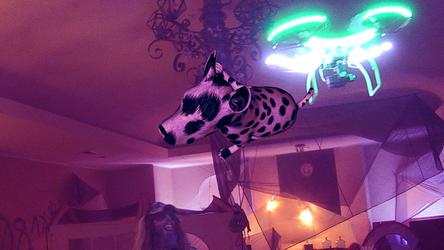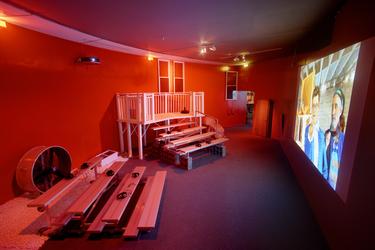Lizzie Fitch/Ryan Trecartin
Lizzie Fitch / Ryan Trecartin: Priority Innfield
Contributions by Christopher Glazek, Bridget Crone, Kenneth Goldsmith, and Ossian Ward. Edited by Paul Luckraft, Maitreyi Maheshwari, and Isabel Venero
The only book devoted to Priority Innfield, the multi-room installation first exhibited at the 2013 Venice Biennale, this volume offers a number of entry-points into an in-depth consideration of Fitch and Trecartin’s practice. Ossian Ward interviews Lizzie Fitch to draw out the finer points of the artists’ collaborative process and discuss the crucial role of materials and objects in the creation of atmospheres and narratives. Bridget Crone considers the bodies that populate the movies, and how they might symbolize the desire to reach for an allusive freedom from ‘swampy’ structures of control. New York–based poet and teacher Kenneth Goldsmith’s draws attention to the connections between Modernist language experiments and Ryan Trecartin as a writer for the digital age. Christopher Glazek’s close knowledge of the Fitch and Trecartin process allows a reflection on the complex way the contents of their art intersects with real world locations and histories, both personal and political.
Lizzie Fitch / Ryan Trecartin: Site Visit
Edited by Ellen Blumenstein; essays by Ellen Blumenstein and Thomas Miessgang
On the occasion of the debut of Lizzie Fitch / Ryan Trecartin’s sound and video installation Site Visit (2014) at KW Institute for Contemporary Art, this volume features essays by curator Ellen Blumenstein and critic Thomas Miessgang expanding on the work’s themes, structure, and complex sonic composition, as well as an image-based presentation of the exhibition and video.
The six-channel video component of the work was shot in a former Masonic temple in Los Angeles. Inspired by its unusual organization and structure—a five-story warren of large, cavernous rooms akin to a convention center—the movie’s protagonist is the building itself. Echoing the game-like narratives from the movies comprising Priority Innfield (2013), it is the premise-driven context that locates agency and meaning in Site Visit.
Starting as a spatial soundscape, Site Visit unfolded over a number of anterior rooms and evolved into a complex installation in the exhibition hall. In this part of the exhibition space, the artists presented a six-channel video on projection screens situated in a way that mirrors the video’s own 5.1 surround sound, engaging the visual, sonic, and physical fields as a combined object.
Hardcover, 10¼ x 13¾ inches, 160 pages
Published by Walther Koenig, Cologne (2015)
Mass Effect: Art and the Internet in the Twenty-First Century
Since the turn of the millennium, the Internet has evolved from what was merely a new medium to a true mass medium-with a deeper and wider cultural reach, greater opportunities for distribution and collaboration, and more complex corporate and political realities. Mapping a loosely chronological series of formative arguments, developments, and happenings, Mass Effect provides an essential guide to understanding the dynamic and ongoing relationship between art and new technologies.
Mass Effect brings together nearly forty contributions, including newly commissioned essays and reprints, image portfolios, and transcribed discussion panels and lectures that offer insights and reflections from a wide range of artists, curators, art historians, and bloggers. Among the topics examined are the use of commercial platforms for art practice, what art means in an age of increasing surveillance, and questions surrounding such recent concepts as "postinternet." Other contributions analyze and document particular works by the artists of And/Or Gallery, Cory Arcangel, DIS, Cao Fei, the Radical Software Group, among others, including an essay by Michael Wang on Ryan Trecartin.
Mass Effect relaunches a publication series initiated by the MIT Press and the New Museum in 1984, which produced six defining volumes for the field of contemporary art. These new volumes will build on this historic partnership and reinvigorate the conversation around contemporary culture once again.
MIT Press and the New Museum of Contemporary Art; 2015; Hardcover; 6.75" x 9.5"; 528 pp; 32 color and 99 b&w illustrations; ISBN 9780262029261


























